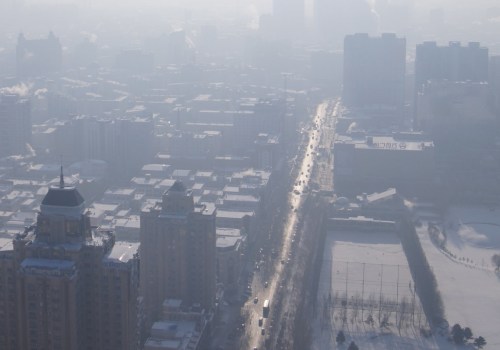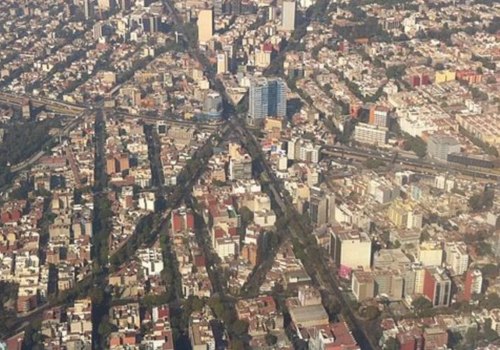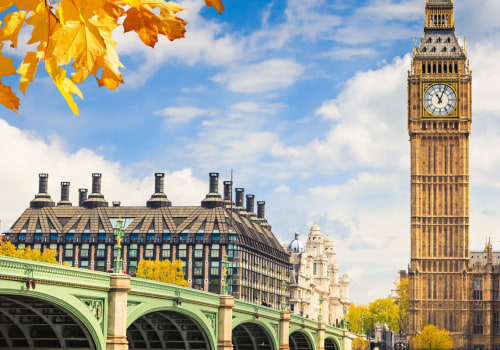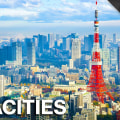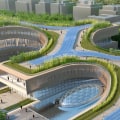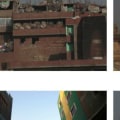As the world's population continues to swell and cities become more crowded, megacities are becoming a new phenomenon. Megacities, defined as metropolitan areas with a population of 10 million or more, have a unique dynamism, with a corresponding set of unique challenges and opportunities. One such challenge is the need to understand and accommodate the urban culture that forms in these massive metropolises. In this article, we'll explore the urban culture of megacities, delving into the distinct elements that make these cities so vibrant.
We'll cover the history of megacities and examine the roles that religion, politics, and economics play in shaping the urban culture. Additionally, we'll explore how public spaces and infrastructure, like parks and transportation systems, can impact how people interact and experience the city. Finally, we'll take a look at how this unique urban culture can be managed to ensure it serves as an asset rather than a hindrance.
Global cities
are typically defined as cities with significant economic and political clout, while megacities have a population of at least 10 million people. Generally, megacities are more diverse and densely populated than global cities, and are hubs for culture and innovation. The social dynamics of megacities can be complex.Megacities are often characterized by a mix of different cultures and lifestyles, creating unique opportunities for collaboration and exchange. There is also often a high level of inequality between rich and poor, which can lead to socioeconomic disparities. Additionally, many megacities are located in developing nations, where there are often inadequate infrastructures to support their populations. As populations continue to grow, cities must adapt to accommodate new residents. This can result in gentrification, which can displace existing residents in favor of wealthier newcomers.
At the same time, advances in technology are transforming the way people interact with their cities, creating new possibilities for urban planning and development. These changes can have an impact on urban culture in megacities as well, as people adapt to the new technological environment. Urban culture in megacities is a vibrant and complex phenomenon that reflects the diversity of its inhabitants. It is important to understand the differences between global cities and megacities, as well as the social dynamics at play within megacities. This understanding can help us better appreciate the unique cultures and experiences that exist within these large urban centers.
Changing Urban Culture in Megacities
Urban culture in megacities is constantly evolving and adapting to the changing needs of its inhabitants.With population growth, gentrification, and advances in technology, the way people interact in megacities is changing drastically. Population growth in megacities often leads to overcrowding and a lack of resources. This has caused a shift in the way residents interact with each other, as well as with the city itself. People are more likely to be competitive and less likely to cooperate with one another in order to survive.
This competition can lead to an increase in crime and other social issues such as poverty. Gentrification is another factor that is impacting urban culture in megacities. As new people move into the city, they often bring with them different values and ideas. This can lead to conflict between longtime residents and newcomers, as well as cultural clashes. Additionally, rising rents and property prices can make it difficult for longtime residents to stay in their homes, further exacerbating this conflict. Finally, advances in technology are also having an impact on urban culture in megacities.
Social media and other forms of digital communication have changed the way people interact with each other. People can now connect with others from around the world without ever leaving their home, which can lead to increased levels of isolation and alienation. Overall, urban culture in megacities is changing due to population growth, gentrification, and advances in technology. These changes can have both positive and negative impacts on the city's inhabitants, depending on how they are managed.
Social Dynamics in Megacities
The social dynamics of megacities are complex and multifaceted. Inequality, infrastructure challenges, and cultural diversity are just some of the elements that shape the unique urban landscape of megacities.In this section, we'll examine each of these forces in more detail.
Inequality
Inequality is one of the most pressing issues in megacities, with wide disparities between the wealthy and the poor. This inequality manifests itself in various forms, from unequal access to basic services like healthcare and education to stark differences in housing quality and access to transportation. Without proper interventions, inequality can lead to further social unrest and economic decline.Infrastructure Challenges
Infrastructure challenges are another major concern in megacities. Poorly maintained roads and bridges can lead to traffic congestion and air pollution, while a lack of adequate public transportation can leave many residents without access to employment opportunities or basic services.Additionally, overcrowding can put a strain on existing infrastructure, making it more difficult for cities to develop new systems.
Cultural Diversity
Megacities are also characterized by their cultural diversity. These cities are home to people from all around the world, and this diversity can lead to unique opportunities for cultural exchange and understanding. However, it can also create tensions between different communities as they attempt to reconcile their different values and beliefs. It is important for cities to find ways to foster cultural understanding and respect. In conclusion, megacities are complex environments that are shaped by a range of social dynamics.Inequality, infrastructure challenges, and cultural diversity all play an important role in determining the character of a megacity, and it is important for city leaders to take these factors into account when making policy decisions.
Differences Between Global Cities and Megacities
Global cities and megacities are both large urban centers, but they have some key differences that make them distinct. Global cities are typically well-connected hubs of global business, finance, culture, and politics, while megacities are much larger cities with populations of over 10 million people. Global cities have a high concentration of corporate headquarters and financial institutions. They are usually considered to be the centers of global trade, finance, and commerce.They are often the home to many of the world’s leading universities, international organizations, and multinational corporations. Megacities, on the other hand, are cities with populations over 10 million people. They are characterized by their massive size, as well as high levels of poverty, inequality, and environmental pollution. Megacities often face significant challenges due to their sheer size, including overcrowding, inadequate infrastructure, and poverty.
The differences between global cities and megacities can be seen in their socio-economic makeup. Global cities tend to be wealthier and more developed than megacities. They tend to have higher rates of investment, employment opportunities, and access to services such as healthcare and education. Megacities, on the other hand, often struggle with high levels of poverty, inequality, and crime.
The differences between global cities and megacities can also be seen in their cultural environment. Global cities tend to be more culturally diverse and open to different lifestyles than megacities. Global cities tend to attract more talented professionals from around the world due to their cosmopolitan atmosphere and opportunities for cultural exchange. Urban culture in megacities is a dynamic and ever-changing phenomenon, reflecting the diversity of its inhabitants. By examining the differences between global cities and megacities, exploring the social dynamics of these large metropolises, and considering how urban culture is evolving, we can gain an in-depth understanding of the unique qualities that make them so fascinating.

